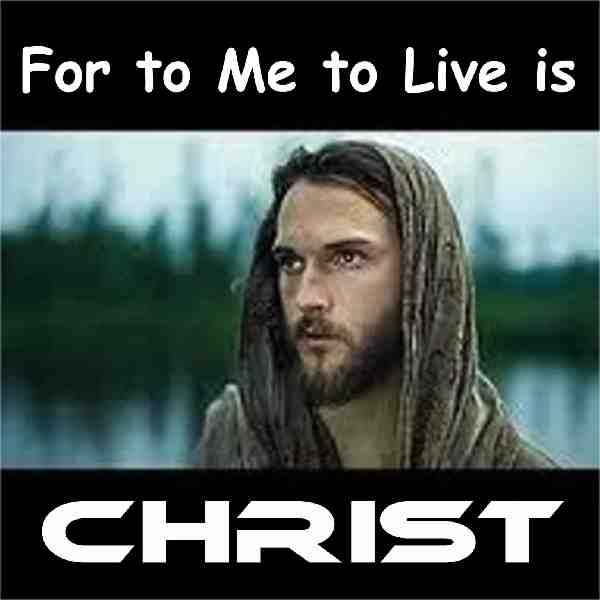|
THESE ARE THE WORDS
OF SAUL OF TARSUS, LATER
CALLED
"THE APOSTLE PAUL"
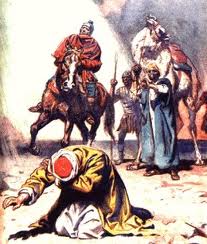
| Saul
of Tarsus, a Jewish Pharisee and student of Gamaliel, a famous Jewish
teacher, met Jesus Christ in an encounter described in highly symbolic
terms about 6 years after Jesus survived a Roman crucifixion.
The encounter occurred at an Essene outpost and missionary complex at
Damascus. The same Essene site where the now famous
"Damascus Document" was composed. This encounter
of Saul of Tarsus is described in similar terms both in Luke's account
in Acts, and in Saul's own writings. Here's
part of Luke's account.
Acts 9:1 "And Saul, yet
breathing out threatenings and slaughter against the disciples
of the Lord, went unto the high priest, 2 And desired of him
letters to Damascus and the synagogues, that if he found any of this way
[here Luke is referring to the Essene
religion, known as the "WAY" of the Essenes], whether
they be men or women, he might bring them bound unto Jerusalem ["bound"
is here also used in a symbolic sense -- every religious person is
"bound" by their beliefs, doctrines, and prejudices].
3 And as he journeyed,
he came near Damascus; [he was in the Damascus Essene compound,
but Luke intentionally leaves this information out, wanting to make
this a magical story, not just a factual account]: and suddenly
there shined round about him a light from heaven."
Dr.
Barbara Thiering PhD, who has made a study of how the Essene authors
of these stories hid the truth of what was happening in ways that now
can be "decoded" using a process known as "Gospel
Pesher", writes about this particular encounter of Saul's on page
139 of her book "Jesus and the Riddle of the Dead Sea
Scrolls."
"In
march, while discussions preparing the council were being held, Saul
attended the noon service in the vestry room of the Demascus
buildings. It was the time when the villagers and
proselytes of the "Way", who
had come on pilgrimage there, sat in the congregation while their
priest said prayers up on the half-roof."
"Jesus was
permitted by the Magians to act as a Second (alternate priest),
and on some occasions stood in for the priest. He would be on
duty at this service. Saul, as he had written in the
Commentary on Habbakkuk (one of the famous Dead Sea Scrolls), had the
strongest objection to him: he was neither a legitimate David nor a
legitimate priest."
"Saul took
his place in the congregation. The noon hour came, and,
as was the custom, part of the roof was removed, allowing the sun
to shine down to indicate the time (no clocks in those long-ago
times), and to reveal the priest in his prayers above. Saul
prostrated himself with the rest of the congregation, averting his
eyes to avoid looking too long up into the sun. The Voice,
that of Jesus, spoke to him."
Acts
9:4 "And he fell to the earth, and heard a voice saying unto
him, 'Saul, Saul, why persecutest thou me? 5 And he said,
Who art thou, Lord? And he said I am Jesus whom thou
persecutest: it is hard for thee to kick against the pricks."
Continues Thiering: "Jesus
know of Saul's hostility, and spoke directly to him. "You
are persecuting me". Saul replied: "You are
illegitimate". Jesus answered with the "I
am", affirming that he was a full priest. He then
invited Saul into the forward part of the congregation, where he could
hear the sermon. As he listened to Jesus, his strenuous
objections to all that Jesus stood for began to dissolve.
He recognized his own state of bondage to the Law, and the way in
which it was binding others (referring back to the
"bound" phrase of verse 2)."
Acts
9:6 And he trembling and astonished said, Lord, what wilt thou have
me to do? And the Lord said unto him, Arise, and go into the
city, and it shall be told thee what thou must do." [Now
Luke's "garden path" which makes of this a "magical
story" -- which people debate to this very day!]
7 And the men which journeyed
with him stood speechless, hearing a voice, but seeing no man. 8
And Saul arose from the earth; and when his eyes were opened,
he saw no man; but they led him by the hand, and brought him into
Damascus. 9 And he was three days without sight, and
neither did eat nor drink."
Thiering explains: "During
the days that followed Saul received instructions in the eastern part
of the monastery building, the "house of Judas". Ananias-Simon
took part in the instruction, as Saul began to transfer his loyalty
from the Hebrews to the Hellenists. But he was soon to make a
distinction between the peace and war Hellenists, rejecting the
latter. It was probably Simon who gave him the lesson about
the resurrection which he later used as a part of the accepted
teaching for the less advanced members.
"Saul had begun his
instruction in a state of "blindness", that is as a novice.
But when he received full initiation into the party he "saw the
light of life", an expression that is found in the [Dead Sea]
scrolls."
"Between AD 40 and
43 he was given the revised form of education, at the end becoming a
bishop. The following year his name was changed to Paul, and he
was appointed to the mission to uncircumcised Gentiles in the
west."
Above
is
a typical picture of Paul's "vision of Jesus" at Damascus,
which is almost universally interpreted in a completely literal
fashion, as Luke no doubt intended for it to be interpreted by
Christians of the Middle Ages, who would love "Magic" and
superstition. |
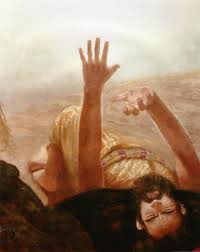
In another picture of this same event, this particular artist has given us a picture of Saul of Tarsus lying on his
back in the dust of Damascus completely blinded by a revelation of Jesus
Christ (not the sun) and astounded by a revelation that Christ has given
him. Let's assume for the purposes of this web page that Saul,
later renamed the Apostle Paul, has rightly summarized this astounding
revelation correctly, once he completely understood its implications, when
he wrote in his Epistle to the Phillippians:
"For to me to live is Christ,--"
Phillippians 1:21a
That
Paul really meant this in the way that I shall now say that he meant this,
which is that he, by living and preaching as he was doing, was living and
preaching as Jesus Christ would be living and preaching, were he there
with the Phillippians instead of Paul, is borne out by reading the whole
passage. Which I shall now quote in its entirety, to show you, my
readers, that this is a true and correct summary.
Phillippians 1:20 "According to my earnest expectations and my
hope, that in nothing I shall be ashamed, but that with all boldness, as
always, so now also Christ
shall be magnified in my body,
whether it be by
life, or by death.
21 "For to me to live is
Christ, and to die is gain.
22 But if I live in the flesh, this is the fruit of my labor: yet what I
shall choose I wot not.
23 For I am in a strait betwixt the two, having a desire to depart, and so
be with Christ; which is far better:
24 Nevertheless to abide in the flesh is more needful for you.
25 And having this confidence, I know that I shall abide and continue with
you all for your furtherance and joy of faith;
26 That your rejoicing may be more abundant in Jesus Christ for me
by my
coming to you again."
 |
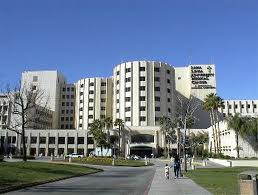
|
| Dr. Robert Flewelling
Holt, MD |
Doctor Holt's alma
mater, Loma Linda University |
|
Dr. Robert Holt md, mph, who
spent a lot of the money he made as an Emergency Room Physician in
various North Carolina Emergency Rooms, including Ahoskie, Onslow
Memorial Hospital in Jacksonville, Sampson County Memorial Hospital in
Clinton, Bladen County Hospital in Elizabethtown, Good Hope Hospital in
Erwin, and Cherokee Indian Hospital in Cherokee, traveling all over the
world doing research on the Essenes, and the origins of the Bible and of
Christianity,--has been to both Qumran by the Dead Sea and Kashmir in
the Himalaya Mountains. And also the Damascus in Syria, where
Saul of Tarsus had the experience pictured and discussed above. He has
also visited the ruins of Phillipi, where Paul sent the letter quoted.
|
|
Paul
wrote a lot of controversial things in his letters, some of which have
been twisted by priests of the Middle Ages and by ministers and
evangelists in more modern times to produce an "Easy Gospel"
that lazy people have used to justify doing nothing much themselves
but instead relying entirely on the merits of the life of Jesus Christ
to save them from eternal damnation. Obviously Paul
himself was not living this lazy irresponsible life, but was living
every moment of every day as if Christ was living in him and through
him. As he made very clear to me, and I hope also to you when he
stated shortly but accurately --
"For to me to live is Christ,--"
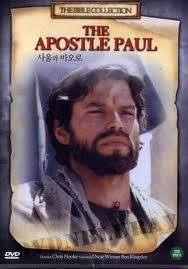
If we were now
to decide to throw everything else Paul wrote in the wastebasket except for
one part of one letter, that one most useful part would definitly be 1
Corinthians chapter 13.
1 "Though
I speak with the tongues of men and of angels, and have not charity
(Agape LOVE), I am become as sounding brass, or a tinkling cymbal.
2
"And though I have the gift of prophecy, and understand all
mysteries, and all knowledge; and though I have all faith, so that I
could remove mountains, and have not charity (Agape LOVE), I am
nothing.
3
"And though I bestow all my goods to feed the poor, and though
I give my body to be burned, and have not charity (Agape LOVE), it
profiteth me nothing.
4
"Charity (Agape LOVE) suffereth long, and is kind; charity (Agape
LOVE) envieth not; charity (Agape LOVE) vaunteth not itself, is not
puffed up,
5 "Doth
not behave itself unseemly, seeketh not her own, is not easily
provoked, thinketh no evil;
6 "Rejoiceth
not in iniquity, but rejoiceth in the truth;
7 "Beareth
all things, believeth all things, endureth all things.
8 "Charity
(Agape LOVE) never faileth: but whether there be prophecies, they
shall fail; whether there be tongues, they shall cease; whether there
be knowledge, it shall vanish away.
9 "For
we know in part, and we prophesy in part.
10 "But
when that which is perfect is come, then that which is in part shall
be done away.
11
"When I was a child, I spake as a child, I understood as a
child, I thought as a child: but when I became a man, I put away
childish things.
12
"For now we see through a glass, darkly; but then face to
face: now I know in part; but then shall I know even as I am known.
13 "And
now abideth faith, hope, charity (Agape LOVE), these three; but the
greatest of these is charity (Agape LOVE)."
|
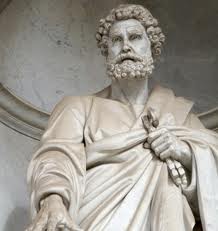
|
The Secret Life of Paul
As I showed you earlier on this page with the help of Dr. Barbara
Thiering's book Jesus and the Riddle of the Dead Sea Scrolls, those
who read only the surface reading of the Gospels, Acts, and even Paul's
Epistles, are not comprehending the whole history of what is going on
beneath that surface story. What is placed out there for
public consumption is not the same as what is available for those of us
now able to read various "Bible Codes", including the
"Gospel Pesher" Thiering made accessible to the world in her
1992 book, and the "Torah Codes" (Bible ELS Computer Codes) made
temporarily popular by Michael Drosnin in his religious blockbuster The
Bible Code in 1997.
The Paul that the religious world after Constantine the Great and the
Council of Nicea in 325 AD made great, and canonized as the sculptor of a
"Divine Christ",--- the "Crucified Christ" of a
million crucifixes, can be symbolized by the marble statue pictured above.
The secret life of the real Paul that can only be accessed by a critical
reading of Acts and his epistles using "Gospel Pesher"
techniques reveals a Paul that had his doubts about the kind of religion,
to him an irresponsible religion, being promoted by Peter at Pentecost,
and Simon Magus at Pentecost and later at Damascus, and much later at
Rome, where Paul, along with Peter, lost his own life promoting what Paul
himself saw as a "delusion".
Both of these men saw
Jesus as another man, very much like themselves, but conspired with each
other, and with Jesus, to make Jesus appear to be a god to the
Gentiles. This conspiracy was not successful in their
lifetimes, but began to be successful after 325 AD, when Constantine, with
his own agenda, and seeing an opportunity for Rome to rule the entire
world with a Divine Trinity that Jesus was a part of, made a type of
Christianity that Peter and Paul might not have recognized as being a
product of their teachings, the dominant religion of the Western World.
But it was Jesus himself, first made aware of the possibility of being a
"Christ" by an Indian god quite unfamiliar to many or most of my
readers, passed on this vision of what it could mean to be a
"Christ" to Peter in the "Feed my lambs", "Feed
my sheep," "Feed my ewes," scenario of John chapter 21,
(Monday, June
1, 33 AD, at Kherbit Mazin, 6 Km south of Qumran monastery).
Then later to Paul by the "blinding light" at Damascus scenario
on Monday, February 29, 40 AD.
Jesus was offering Paul his
opportunity to be a "Christ" or charismatic leader to Gentiles
in the place of being a critical promoter of Essene laws to a group of
Essenes who already knew all these laws and regulations, and had little
choice but to keep them or be immediately expelled from Essene membership
(and the opportunity for "Eternal Life and Glory") if they broke
"even the least of these commandments". First Peter,
then Paul, became the equivalent of Essene heretics, in a program
instigated by Jesus Christ, perhaps the original Essene heretic that we
all can know about and identify with.
Paul willingly and knowingly gave up what he fully believed was a promise
of "Eternal Life" based on proper actions and correct behavior
to teach what he considered to be a delusion, that one's actions have
little to do with "Eternal Life" and that all one needs to do is
accept that Jesus has lived a "perfect life" for you, and then
died the death that you deserve "in your place".
Sound familiar? It should!
In all likelihood, you probably believe it to be true! |
Paul knew what Suzanne
Olsson and I know,
that Jesus lived in Kashmir!
Both before and after 29 AD, when he became an Essene
Messiah
at Qumran. And before and after March of 33
AD, when he was
crucified by the Romans, was seen alive in Jerusalem
after 3 days,
and was subsequently seen periodically at various places
through-
out the Roman Empire in the company of Luke, Peter, and
Paul.
|
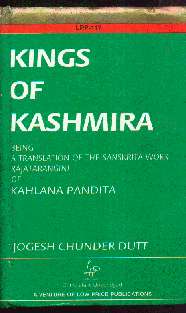
|
 |
| The respected and official "History of the
Kashmir Kings" by Kahlana |
Sent to me all the way from India by Suzanna Olsson,
whose picture I have shown above. |
|
The story of Jesus Christ in Kashmir
starts in 25 AD, when he was appointed or elected King of that small
Himalayan nation. But he was apparently living a while before
that in Pakistan, in the city of Taxila. Where he was chosen to be
the husband of a princess, the princess Amritaprabha, the daughter of
King Gopadditya.. The story begins on page 33.
His name in those days and in that location was Prince
Meghavahana.
It is quite clear to me from my
reading of the "Prince Meghavahana" story that Jesus was able
to commute freely both between Kashmir and the Qumran area of Judea in
a Vimana (space-craft) owned and operated by Lord Shiva of Kashmir (a
major Indian god), and this opens up the possibility that Jesus also
appeared unexpectedly various other places in various stories in Acts
by means of this same Vimana or space-craft. In which case Dr.
Barbara Thiering PhD is only partly correct about the nature and
circumstances of Paul's encounter with "the Light" on the
road to Damascus. Jesus may not have been alone on that
occasion, and Paul may have then met Jesus' "Father in
Heaven", the owner and driver of a powerful space-craft. The
"Light in the Sky" that temporarily blinded Saul, and then
rearranged his life and his priorities, may have been Shiva performing
the type of magic he is well-known for in Kashmir and
India. Using his "third eye" to not only start a
"New Age" in which Paul would play a prominent part, but also
to open up Paul's mind to the possibilities this opportunity presented.
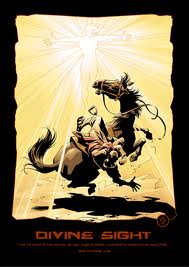
There is another
slight possibility that Paul may have actually ridden with Jesus and
Lord Shiva in the Vimana (space-craft) on this occasion, or on another
occasion soon afterwards. Or perhaps while Paul was studying at
Qumran for his new position of Essene missionary to the
Gentiles. On this trip into the sky, Paul would have been
duly impressed, of course, while the three discussed Paul's future
career. Paul's often hard-to-understand meandering style of writing
gets even more so in the following quotation, which may, indeed, be
about such a trip.
1 Corinthians
12:1 "It is not expedient for me doubtless to glory.
I will come to visions and revelations of the Lord. (Which Lord, Jesus
or Shiva?)
2 "I
knew a man in Christ above fourteen years ago (that could have been at
the time of the Damascus "incident"), (whether in the body, I
cannot tell: God knoweth:) such a one caught up to the third
heaven."
3 "And
I knew such a man, (whether in the body, or out of the body, I cannot
tell: God knoweth;)
4 "How
that he was caught up into paradise, and heard unspeakable words, which
it is not lawful for a man to utter. (But possibly
"lawful" for Lord Shiva to utter!)
5 "Of
such a one will I glory: yet of myself I will not glory, but in mine
infirmities."
|
|
